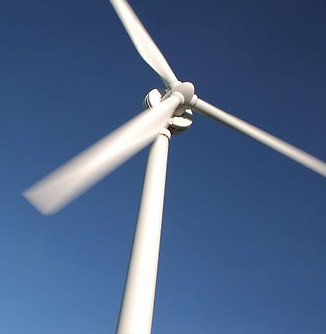
Pierre BORIES
Use of a video analysis software to study the relationship between burrows number and on-site diversity in a offshore windfarm implantation zone
Bories, P., Labrune, C. (2019)


© Philippe Turpin / MAXPPP

© Ifremer
English: The APPEAL-MED project is the Mediterranean component of the APPEAL project (Socio-ecosystem approach to the impact of wind farms) and aims to establish a complete initial state in order to allow a BACI (Before After Control Impact) type study once the wind turbines are installed off Leucate (France, 66). The first part of this internship abled us to modify the AVINOTE software, in close collaboration with its creator Jean-Claude Duchêne, so that it could be used to process photos. Once the software was operational, exploratory work was carried out on a single sampling campaign (APPEAL-MED1). Our objective was to understand if a relationship between the burrows number and the diversity existed in the studied area. As trawling was the dominant pressure in this area, the parameters estimated from the classic analysis of benthic macrofauna (infauna) as well as the videos and photos were linked to the bottom abrasion data. No relationships were detected between the number of burrows and the diversity observed, as well as between the abrasion data and the number of burrows. However, and in line with previous studies, we detected a change in structuring species and taxonomic groups depending on the trawling intensity. This change resulted in a decrease in the number of crustaceans and an increase in the number of annelids and molluscs. Such modifications may have been induced by trawling through an overall alteration of the environment, an elimination of non-target species and through the attraction of predators and scavengers.
French: Le projet APPEAL-MED est la composante méditerranéenne du projet APPEAL (Approche socio-écosystémique de l’impact des parcs éoliens). Il a pour objectif d’établir un état initial complet afin de permettre une étude de type BACI (Before After Control Impact) une fois les éoliennes installées au large de Leucate (France, 66). La première partie de ce stage a permis de modifier le logiciel AVINOTE, en collaboration étroite avec son créateur Jean-Claude Duchêne, afin que ce dernier soit utilisable pour traiter les photos. Une fois le logiciel opérationnel, un travail exploratoire a été effectué sur une seule campagne d’échantillonnage (APPEAL-MED1). Le chalutage étant la pression dominante sur la zone étudiée, nous avons choisis d'incorporer les données d'abrasions à cette étude. Grâce à ces données, nous avons exploré la relation terrier/chalutage ainsi que l'impact du chalutage sur la communauté endogée. Aucune relation significative n'a été détectée entre le nombre de terriers et les paramètres étudiés. Cependant, et conformément à de précédentes études, nous avons détecté un changement d’espèces structurantes et des groupes taxonomiques en fonction de l’intensité de chalutage. Ce changement s'est traduit par une diminution du nombre de crustacés et une augmentation du nombre d’annélides et de mollusques et pourrait être induit par une altération globale du milieu, une élimination des espèces non ciblées et à travers l’attraction de prédateurs et de charognards.